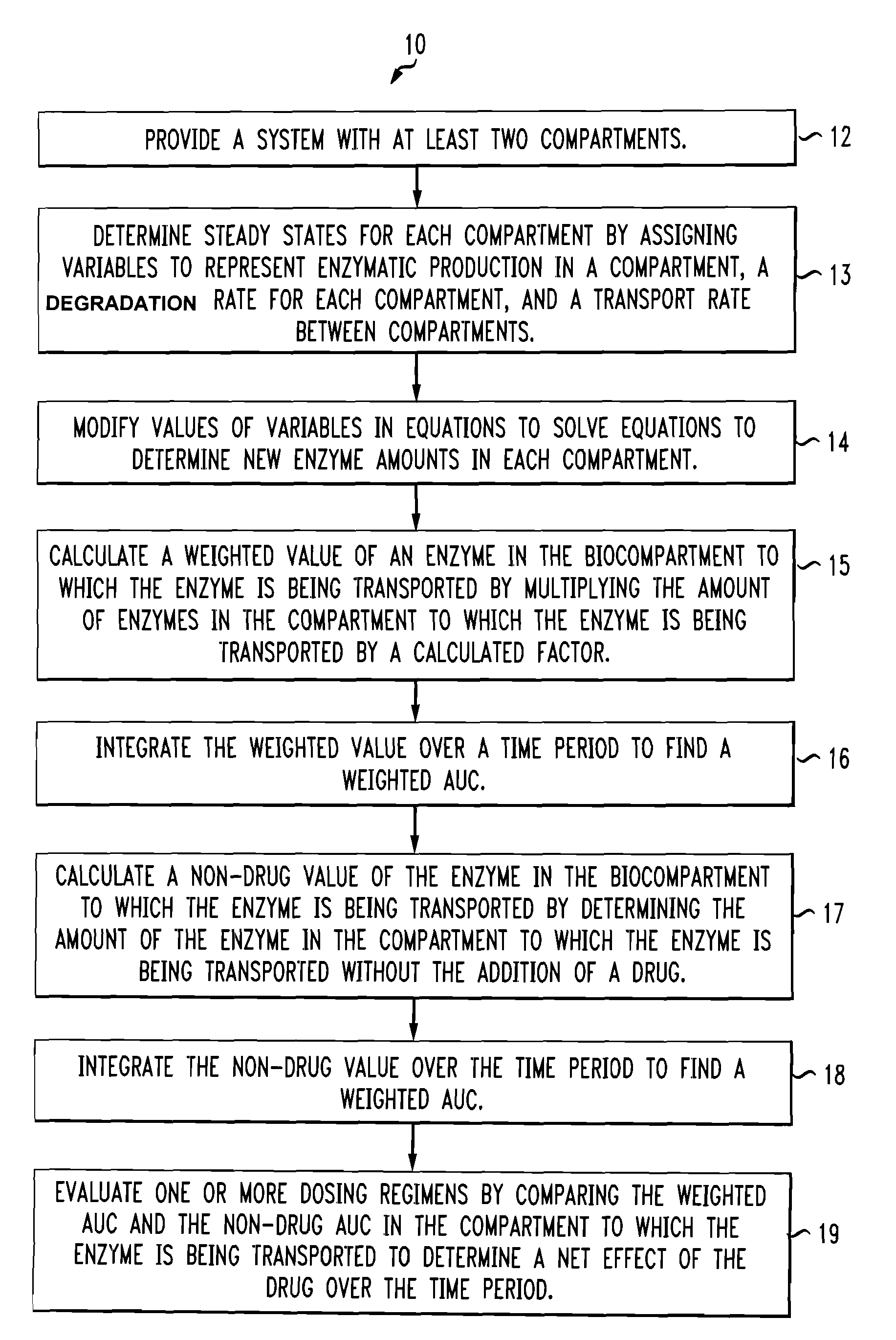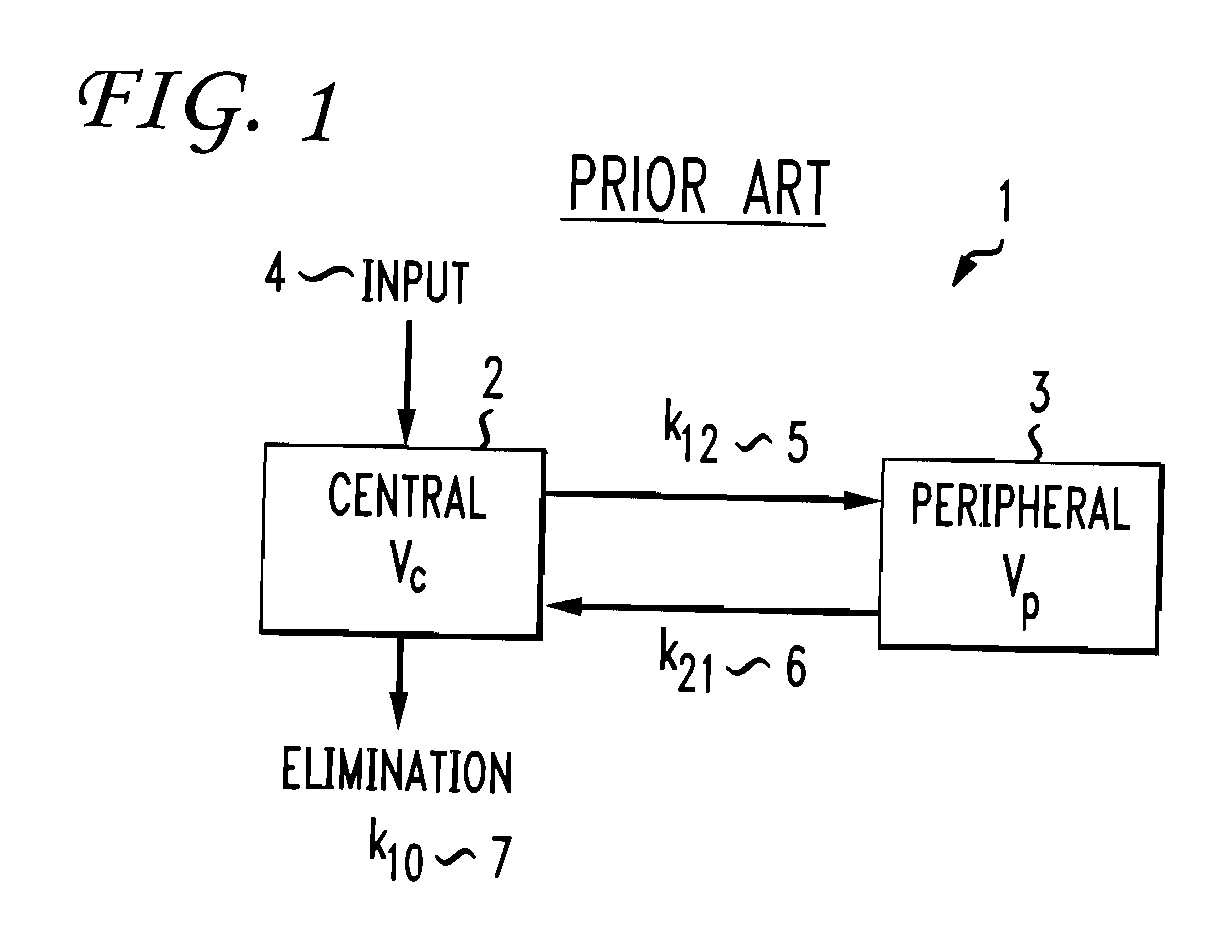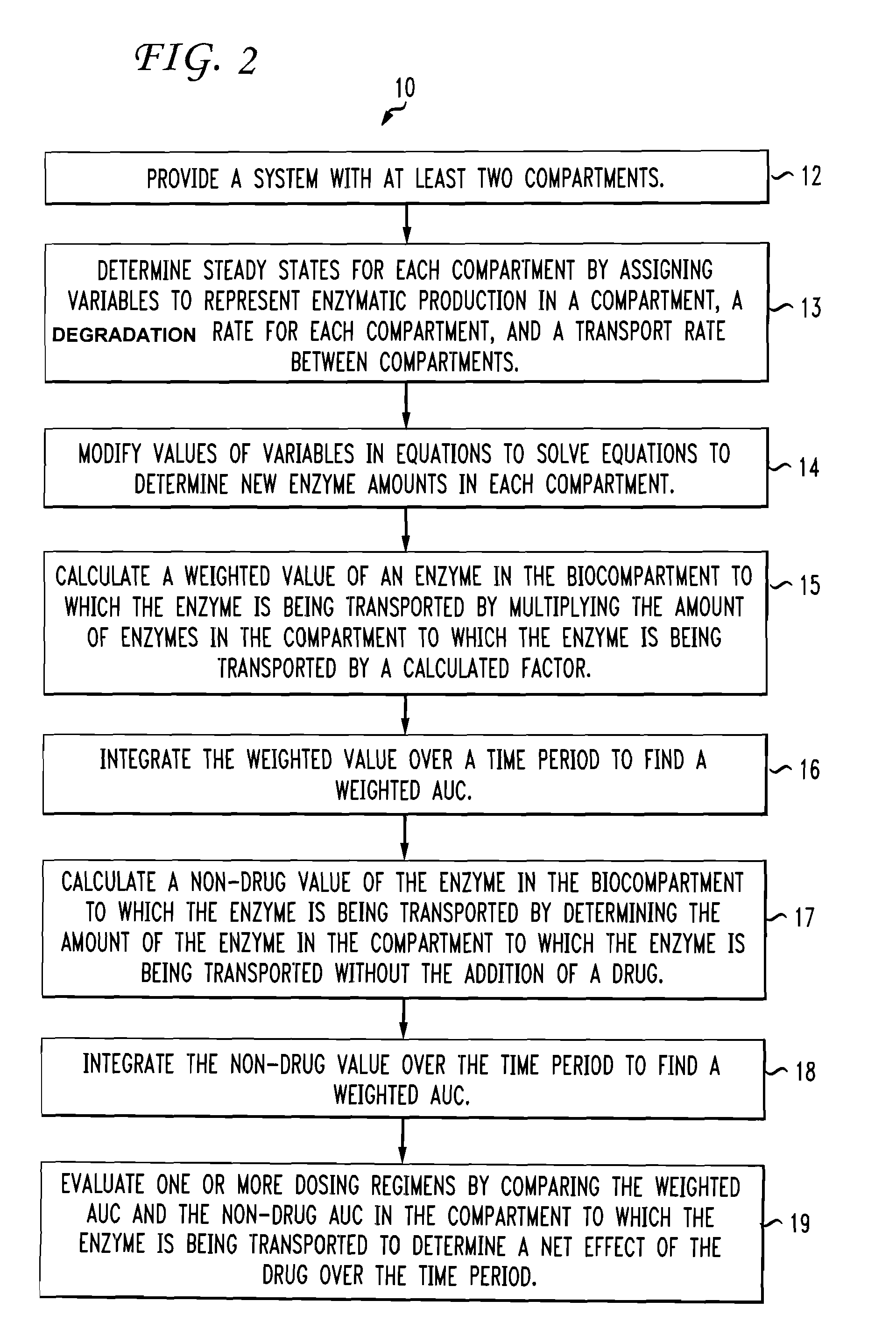[0007]According to aspects illustrated herein, there is provided a method for modeling a dosing regimen for a medicament. The method includes providing a system having at least two biocompartments selected from the group consisting of intracellular and extracellular regions. The method determines steady state levels in each of the at least two biocompartments by assigning variables to represent a protein production rate in one of the at least two biocompartments, a degradation rate constant for each of the at least two biocompartments, and a transport rate constant between the at least two biocompartments using a set of equations. After that, the method provides for modifying values of the assigned variables in the set of equations to use the set of equations to calculate an amount of at least one protein in one of the at least two biocompartments to which the at least one protein is being transported. The equations reflect selected characteristics of the at least one protein and one or more drug pulse parameters, the one or more drug pulse parameters include a start time, a duration, an interval time, a number of pulses, an amount of drug, and a number of times the settings are repeated. Next, the method calculates a weighted value of proteins in one or more of the at least two biocompartments to which the at least one protein is being transported, as a function of time, by multiplying an amount of at least one protein in the one of the at least two biocompartments to which the at least one protein is being transported by a calculated factor. The calculated factor is determined using a drug concentration pulse curve and a set of input parameters including a substrate concentration, a maximum drug concentration, a rise time, and a drug elimination half-life. The weighted value over a time period is then integrated to find a weighted area under the curve. Then, the method calculates a non-drug value of the at least one protein in the one of the at least two biocompartments to which the at least one protein is being transported. The non-drug value is an amount of the at least one protein in the one of the at least two biocompartments to which the at least one protein is being transported without the addition of a drug. The non-drug value is also integrated over the time period to find a non-drug area under the curve. Finally, the method evaluates one or more dosing regimens by comparing the weighted area under the curve and the non-drug area under the curve of the at least one protein in the one of the at least two biocompartments to which the at least one protein is being transported over the time period to determine a net effect of the drug over the time period.
[0008]According to further aspects illustrated herein, there is provided a system for modeling a dosing regimen of a medicament. The system includes a display device, a data store comprising a plurality of values for modeling a dosing regime of a medicament, and a service delivery device operatively connected to the display device and the data store. The service delivery device includes a processor and a memory for storing instructions that, in response to receiving a request to model the dosing regimen of a medicament, causes the processor to provide a system including at least two biocompartments selected from the group consisting of intracellular and extracellular regions. The processor then determines steady state levels in each of the at least two biocompartments by assigning variables to represent a protein production rate in one of the at least two biocompartments, a degradation rate constant for each of the at least two biocompartments, and a transport rate constant between the at least two biocompartments using a set of equations. The processor provides for modifying values of the assigned variables in the set of equations to use the set of equations to calculate an amount of at least one protein in one of the at least two biocompartments to which the at least one protein is being transported, as a function of time, the equations reflect selected characteristics of the at least one protein and one or more drug pulse parameters. The one or more drug pulse parameters include a start time, a duration, an interval time, a number of pulses, an amount of drug, and a number of times the settings are repeated. The processor then calculates a weighted value of the at least one protein in one of the at least two biocompartments to which the at least one protein is being transported by multiplying the amount of the at least one protein in one of the at least two biocompartments to which the at least one protein is being transported, the factor being determined using a drug concentration pulse curve and input parameters including a substrate concentration, a maximum drug concentration, a rise time, and a drug elimination half-life. The processor integrates the weighted value over a time period to find a weighted area under the curve. Then, the processor calculates a non-drug value of the at least one protein in the one of the at least two biocompartments to which the at least one protein is being transported. The non-drug value is an amount of the at least one protein in the one of the at least two biocompartments to which the at least one protein is being transported without the addition of a drug. The non-drug value is also integrated over the time period to find a non-drug area under the curve. Finally, the processor evaluates one or more dosing regimens by comparing the weighted area under the curve and the non-drug area under the curve of the at least one protein in the one of the at least two biocompartments to which the at least one protein is being transported over the time...
 Login to View More
Login to View More  Login to View More
Login to View More 


